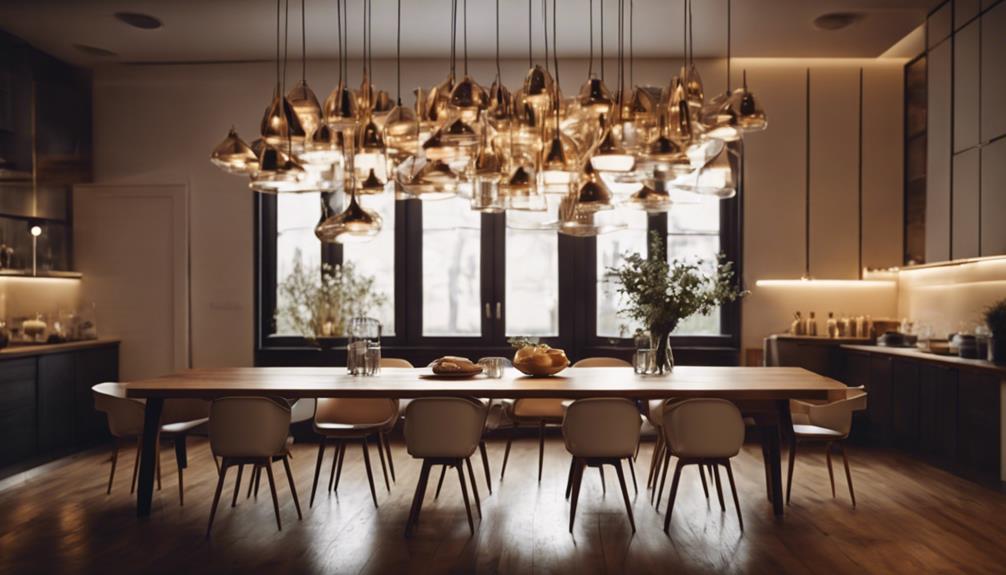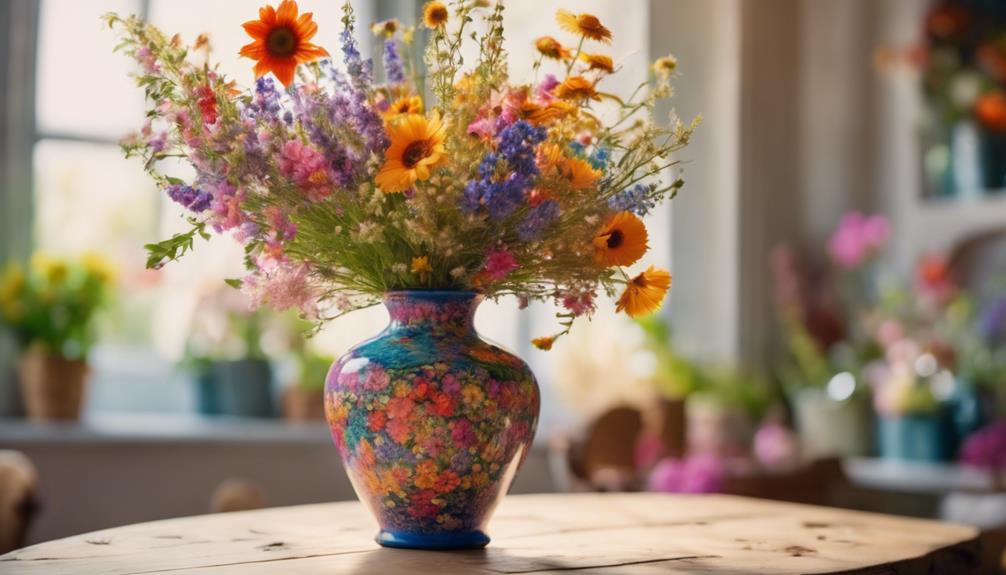Step into the warm glow of a vintage dream with the stunning desk lamp that shines with adjustable LED lights and a waterproof, wireless design. Its portable size and elegant color options make it a classic addition to your space. With a powerful battery and USB charging capability, this lamp is both practical and chic. Priced affordably and with free worldwide shipping, it's an exceptional value. Discover how this lamp can light up your vintage dreams with its timeless style and functionality. Explore more about Mr. Wattson and the different styles and personalities available for a personalized touch.
Key Takeaways
- Vintage-inspired lamp with dimmable LED lights and waterproof design for a nostalgic ambiance.
- Portable and convenient with a powerful 5200 mAh battery for extended lighting anywhere.
- Available in various stylish colors to match personal preferences and decor.
- Priced at Rs. 9,971.69 with free worldwide shipping for exceptional value.
- Reflects individual style with unique personalities and styles like Flashy and Earthy Mr. Wattson.
Vintage Lamp Features
Explore the timeless allure of the Vintage Lamp Features in the versatile Aluminum LED Desk Lamp. This table lamp offers adjustable brightness through its dimmable LED lights, providing the perfect ambiance for any occasion.
With a waterproof and wireless design, coupled with a powerful 5200 mAh battery, you can enjoy the warm glow of this lamp wherever you desire. Available in various colors like Gold, Matte Grey, Brown, White, and Black, this lamp adds a touch of vintage-inspired elegance to your space.
The versatility of this table lamp shines through as it can be used on desks, tables, or to create a cozy atmosphere in any room. Additionally, the inclusion of fun stickers allows for a personalized touch to make this lamp uniquely yours.
Measuring 38*11cm and weighing just 1.05kg, this lamp is portable and convenient for various settings. With free worldwide shipping and stock availability, the Vintage Aluminum LED Desk Lamp is both stylish and functional, bringing your vintage dreams to life.
Lamp Specifications

Discover the technical details of the Vintage Aluminum LED Desk Lamp in five elegant color options.
This table lamp offers adjustable brightness through dimmable LED lights, a waterproof and wireless design powered by a 5200 mAh battery. Crafted from aluminium and acrylic, it emits warm white light (3000k) with a power output of 3W. With dimensions of 38*11cm and weighing 1.05kg, this lamp includes a USB cable for convenient charging and fun stickers for personalization.
The Vintage Aluminum LED Desk Lamp comes in Gold, Matte Grey, Matte Brown, Matte White, and Matte Black, catering to various aesthetics.
Its versatile functionality makes it suitable for multiple settings, from your office desk to your bedside table. This lamp combines style and practicality, providing both an elegant addition to your decor and a reliable source of lighting.
Experience the charm of vintage design with modern features in this sleek and functional lamp.
Pricing Details
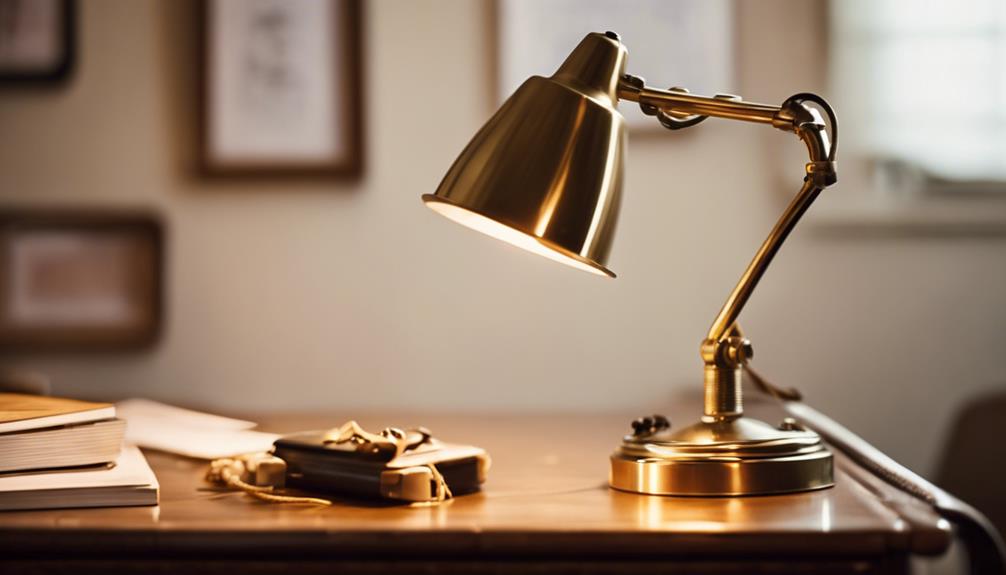
You'll find the pricing details of the Vintage Aluminum LED Desk Lamp intriguing. Compare the cost to similar products in the market, and you'll see the value it offers for its features.
Understanding the pricing will give you a clearer picture of why this lamp is a great investment for your vintage-inspired space.
Pricing Comparison
In comparing the pricing details of the Vintage Aluminum LED Desk Lamp, it's remarkable that all five color variants are priced at Rs. 9,971.69 each, offering customers a range of options without price discrepancies. This consistency in pricing allows buyers to choose their preferred color variant solely based on personal preference without the need to contemplate cost differences.
Whether you opt for the elegant Gold, sleek Matte Grey, sophisticated Matte Brown, pristine Matte White, or classic Matte Black, rest assured that you're getting the same great value at the same price point. This pricing strategy ensures fairness and simplicity for customers looking to add a touch of vintage charm to their workspace or living area without worrying about budget variations.
With the Vintage Aluminum LED Desk Lamp, you can select the color that best complements your decor style without any financial trade-offs.
Value for Money
The Vintage Aluminum LED Desk Lamp offers exceptional value for money with its versatile features and consistent pricing across all color variants. Priced at Rs. 9,971.69, this lamp provides adjustable brightness through dimmable LED lights, ensuring a customizable lighting experience.
Its waterproof design with an IP54 rating adds durability and versatility, making it suitable for various settings like desks, tables, or for creating ambiance. The included 5200 mAh battery allows for wireless use, enhancing convenience and portability.
With a power of 3W and warm white light color (3000k), this lamp offers stepless dimming functionality to suit different preferences. Additionally, the option for free worldwide shipping and availability for immediate purchase make this lamp a convenient choice for those seeking quality and style.
Add a touch of personalization with the fun stickers included, making the Vintage Aluminum LED Desk Lamp a practical and stylish lighting solution for your vintage dreams.
Product Variants
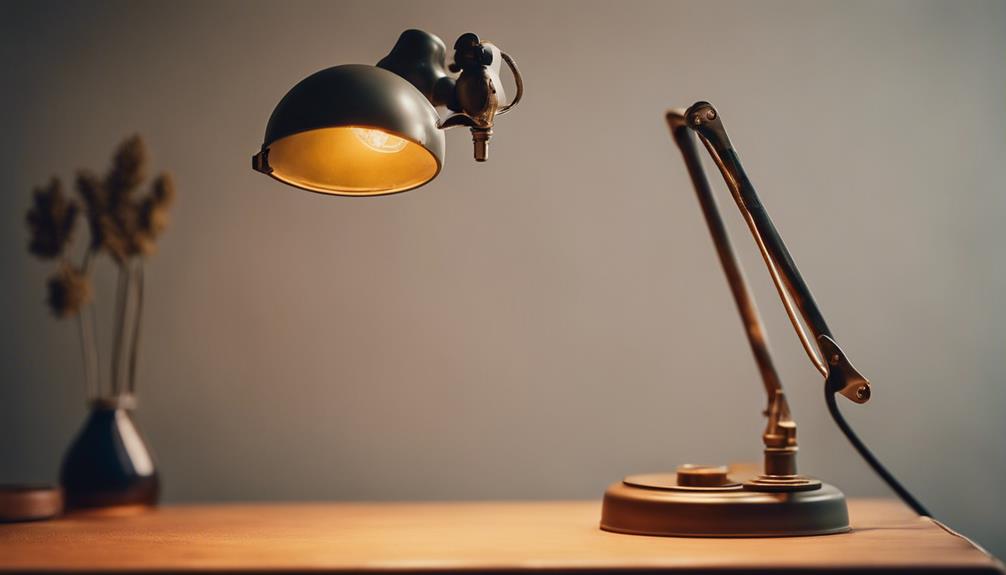
You can explore the various color options available for the Vintage Aluminum LED Desk Lamp, including Gold, Matte Grey, Matte Brown, Matte White, and Matte Black. Each variant is priced at Rs. 9,971.69 with free worldwide shipping, offering you a choice to match your style and preferences.
Additionally, these lamps feature adjustable brightness, dimmable LED lights, and a waterproof, wireless design for versatile use.
Variant Color Availability
Among the features that set the vintage aluminum LED desk lamp apart is its availability in five stunning color variants. The lamp is offered in Gold, Matte Grey, Matte Brown, Matte White, and Matte Black, providing a diverse range of options to suit various preferences and interior design styles.
Priced at Rs. 9,971.69 per variant, customers can choose a color that best complements their table or workspace. This wide array of color choices not only adds a touch of elegance but also allows for personalization and customization.
Whether you prefer a classic gold finish for a touch of sophistication or a sleek matte black for a modern look, the lamp's color variants cater to a variety of decor aesthetics. By offering such a selection, customers can effortlessly find a desk lamp that not only illuminates their space but also enhances its overall ambiance.
Pricing and Features
With a price of Rs. 9,971.69, the vintage aluminum LED desk lamp offers adjustable brightness and comes in five stunning color variants.
This lamp emits a soft glow of warm white light at 3000k, creating a cozy ambiance.
The dimmable LED lights allow you to set the perfect brightness for any setting, whether it's for work or relaxation.
Made of Aluminium + Acrylic, this lamp isn't only stylish but also durable. Its wireless and waterproof design, along with a 5200mAh battery, guarantees convenience and portability.
Operating at DC 5v with a power of 3W, this desk lamp is versatile and can be used on desks, tables, or even as ambient lighting.
Each lamp, measuring 38*11cm and weighing 1.05kg, comes with personalization options such as fun stickers to make it uniquely yours.
The package includes the lamp, a USB cable for charging, and instructions for easy setup.
Get yours today and illuminate your space with this vintage-inspired beauty.
Additional Information
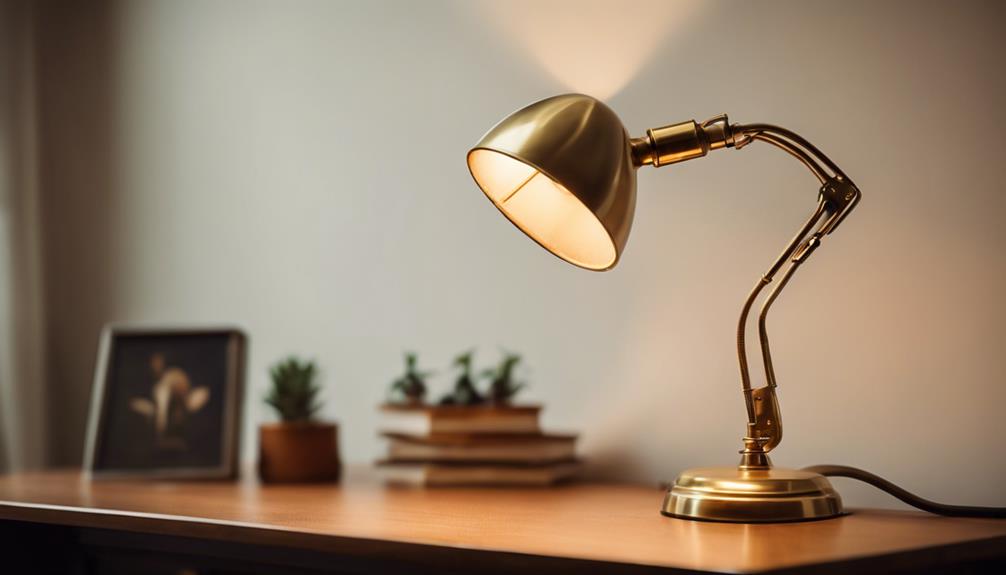
What other features does the Desk Lamp for Vintage Dreams offer besides its adjustable brightness and wireless functionality?
This versatile lamp not only provides a warm white light with stepless dimming for customizable brightness but also boasts a compact design. With dimensions of 38*11cm and a weight of 1.05kg, this lamp is portable and convenient for various settings.
The package box, sized at 15*15*30cm, ensures safe delivery and easy storage when not in use.
Moreover, the charger supply type includes the lamp itself, a USB cable for flexible charging options, and an instruction manual for simple setup and usage guidance.
The lamp's waterproof construction enhances its durability, making it suitable for both indoor and outdoor use. Equipped with a powerful 5200mAh battery, this lamp offers extended lighting time without the hassle of cords, adding to its functionality and practicality.
Simply click on the “Add to cart” option to bring this vintage-inspired lamp into your space effortlessly.
Customer Interaction

Engage customers effortlessly through the convenient 'Ask a question' feature available for inquiries. This feature allows customers to seek clarification or additional information about the vintage desk lamp, shedding light on any uncertainties they may have. Additionally, customers can easily share their favorite finds with friends and family through social media platforms like Facebook, Twitter, and Pinterest. This not only fosters customer interaction but also widens the reach of the vintage desk lamp to a larger audience.
To protect customer information and provide transparency, a privacy policy and terms of service are in place. This ensures that customers feel secure when engaging with the product online. Furthermore, the ability for customers to view recently viewed items allows for quick reference, making it easier for them to revisit products they are interested in. The 'You may also like' section further enhances customer interaction by suggesting similar products based on their preferences.
| Feature | Description | Benefit |
|---|---|---|
| Ask a question | Inquiries about the lamp answered promptly | Clears any doubts customers may have |
| Social Sharing | Share options on various platforms | Increases product visibility |
| Privacy Policy | Protects customer information | Builds trust with customers |
Mr. Wattson's Personalities

Explore the diverse personalities within the Mr. Wattson collection, each embodying unique styles and characteristics to suit different preferences.
Whether you're drawn to the flashy and vibrant presence of Flashy Mr. Wattson in Flash Red, the calm and elegant demeanor of Understated Mr. Wattson in Nardo Gray, or the sophisticated 70s aesthetic of CigarClub in Chiltern Green, Mr. Wattson knows exactly how to cater to your individual taste.
If you prefer a more mature and professional vibe, Intense Grey is the perfect choice, exuding style and sophistication. On the other hand, Earthy Mr. Wattson in Desert Green draws inspiration from nature, offering a serene and natural ambiance to your space.
With each personality in the Mr. Wattson collection carefully crafted to reflect different moods and styles, you can trust that Mr. Wattson knows exactly how to light up your vintage dreams in a way that resonates with you.
Mr. Wattson's Styles
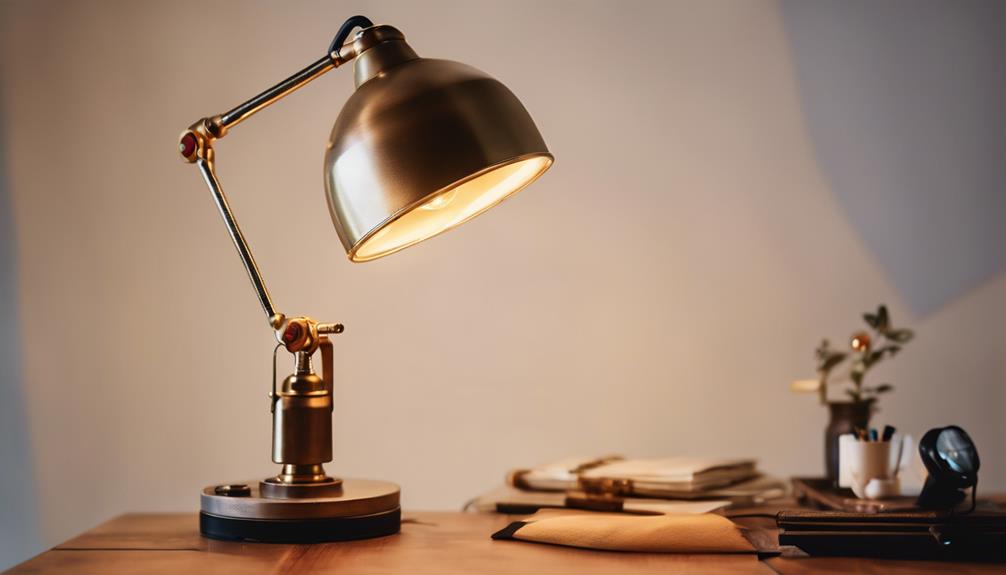
Mr. Wattson's Styles encompass a variety of options to suit different tastes and preferences. From the elegance of SuitedUp in Fashion Black to the creativity of SunnySide Up in Mcclaren Orange, each lamp offers a unique style statement.
RedMeans Go in Dream Red symbolizes action and determination, while The Pearl in Vintage White draws inspiration from classic literature. Every Mr. Wattson lamp embodies a specific personality, like the workaholic vibe of BlueCollar in Cobra Blue.
The collection boasts 11 outstanding colors, ensuring there's a lamp to match any decor. These lamps aren't only functional but also add character to any room. With Mr. Wattson, you can bring a touch of style and versatility to your living space.
All Rights Reserved, Mr. Wattson's Styles are designed to cater to a diverse range of preferences, making them a perfect choice for those seeking both functionality and aesthetic appeal.
Mr. Wattson's Impact

Intense Grey captures attention and evokes passion as part of the impactful range offered by Mr. Wattson's lamp collection. Whether you're looking to add a touch of sophistication or a bold statement piece to your space, Mr. Wattson's Impact has a variety of personalities to choose from:
- Mcclaren Orange: Infusing playful energy, this option brings a vibrant and lively atmosphere to any room.
- Dream Red: Symbolizing determination and action, this choice is perfect for those seeking motivation and drive in their workspace.
- Cobra Blue: Designed for workaholics, this striking tone exudes professionalism and focus, ideal for enhancing productivity during late-night tasks.
Each personality within Mr. Wattson's Impact collection is carefully crafted to not only illuminate your space but also reflect your individual style and personality.
Choose a lamp that not only lights up your room but also speaks to your soul.
Conclusion
So, if you're seeking to brighten up your vintage dreams, turn to Mr. Wattson. With his charming personalities and stylish designs, he's sure to make a unique impact in any room.
Don't be left in the dark – grab a Mr. Wattson lamp today and let your retro fantasies come to life in a warm, glowing light.

